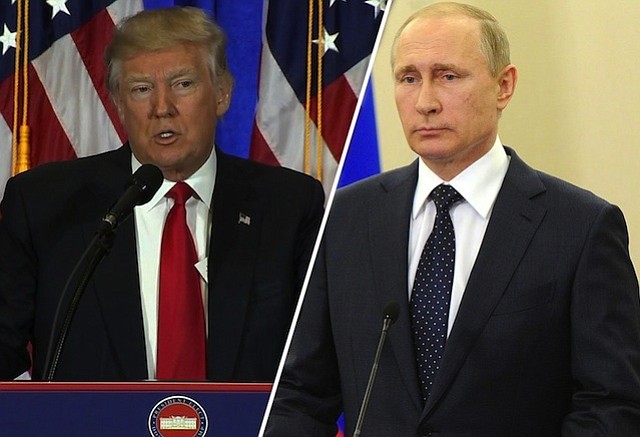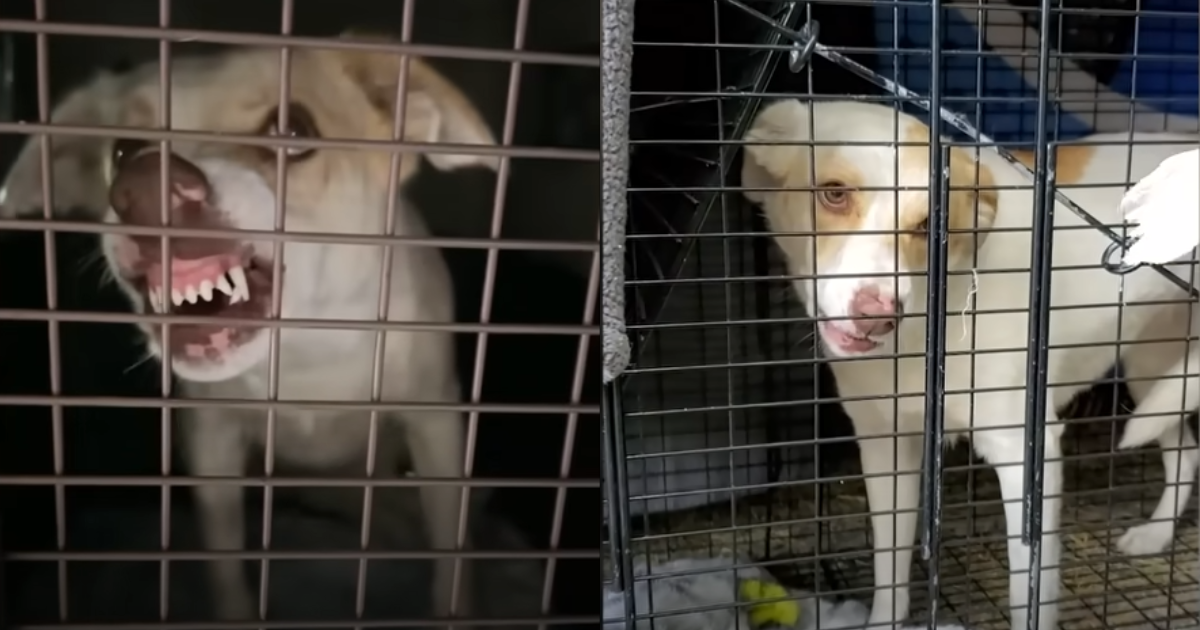
President Donald Trump says Russian leader Vladimir Putin ‘has gone absolutely CRAZY!’
WASHINGTON (AP) —
President Donald Trump made it clear he is losing patience with Vladimir Putin, leveling some of his sharpest criticism at the Russian leader as Moscow pounded Kyiv and other Ukrainian cities with drones and missiles for a third straight night.

“I’ve always had a very good relationship with Vladimir Putin of Russia, but something has happened to him. He has gone absolutely CRAZY!” Trump wrote in a social media post on Sunday night.
Trump said Putin is “needlessly killing a lot of people,” pointing out that “missiles and drones are being shot into Cities in Ukraine, for no reason whatsoever.”
The attack was the largest aerial assault since Russia’s full-scale invasion of the country in February 2022, according to Ukrainian officials. At least 12 people were killed and dozens injured.

The U.S. president warned that if Putin wants to conquer all of Ukraine, it will “lead to the downfall of Russia!” But Trump expressed frustration with Ukrainian President Volodymyr Zelenskyy as well, saying that he is “doing his Country no favors by talking the way he does.”
“Everything out of his mouth causes problems, I don’t like it, and it better stop,” Trump wrote on social media.

The president has increasingly voiced irritation at Putin and the inability to resolve the now three-year-old war, which Trump promised he would promptly end as he campaigned to return to the White House.
He had long boasted of his friendly relationship with Putin and repeatedly stressed that Russia is more willing than Ukraine to reach a peace deal.
But last month, Trump urged Putin to “STOP!” assaulting Ukraine after Russia launched another deadly barrage of attacks on Kyiv, and he has repeatedly expressed his frustration that the war in Ukraine is continuing.
“I’m not happy with what Putin’s doing. He’s killing a lot of people. And I don’t know what the hell happened to Putin,” Trump told reporters earlier Sunday as he departed northern New Jersey, where he spent most of the weekend. “I’ve known him a long time, always gotten along with him, but he’s sending rockets into cities and killing people and I don’t like it at all. ”
A peace agreement between Russia and Ukraine remains elusive. Trump and Putin spoke on the phone this past week, and Trump announced after the call that Russia and Ukraine will “immediately” begin ceasefire talks. That conversation occurred after Russian and Ukrainian officials met in Turkey for the first face-to-face talks since 2022. But on Thursday, the Kremlin said no direct talks were scheduled.
The European Union has slapped new sanctions on Russia this month in response to Putin’s refusal to agree to a ceasefire. But while Trump has threatened to step up sanctions and tariffs on Russia, he hasn’t acted so far.
🇷🇺 Recent Political and Military Policies of Vladimir Putin (2024–2025)
🏛️ Political Policies:
-
Constitutional Entrenchment of Power (Post-2020 Continuation):
Putin continues to consolidate power following the 2020 constitutional amendments that allow him to remain president until 2036. In recent years, he has strengthened institutional control over regional governments and the judiciary. -
Suppression of Political Opposition:
Crackdowns on dissent have intensified:-
Opposition figures, journalists, and activists face arrests, forced exile, or restrictions.
-
The 2024 presidential election was marked by the exclusion of major opposition candidates and widespread allegations of vote manipulation.
-
-
Control over Information and Media:
Russia has expanded its “sovereign internet” infrastructure, blocking Western platforms and tightening control over domestic media. Propaganda promoting traditional Russian values, nationalism, and anti-Western narratives has intensified. -
Nationalist and Ideological Revival:
-
Promotes a conservative, Orthodox Christian, anti-liberal worldview.
-
Reasserts Russia’s historic mission to defend the “Russian World” — including Russian-speaking populations beyond its borders.
-
-
Diplomatic Realignment Toward Asia and the Global South:
-
Strengthening ties with China, Iran, North Korea, and BRICS nations.
-
Promoting a “multipolar world” ideology in opposition to U.S.-led Western dominance.
-
🪖 Military and Defense Policies:
-
Continued War in Ukraine:
-
The war remains central to Putin’s military policy.
-
Russian forces maintain control over portions of Eastern Ukraine.
-
Mobilization and military recruitment have continued, especially in poorer and rural regions.
-
-
Expanded Military Spending:
-
Military budget reached record highs in 2024 and 2025, surpassing 6% of GDP.
Investments in advanced weaponry, drones, cyberwarfare, and missile systems.
Increased Tactical Nuclear Rhetoric:
-
Putin has repeatedly hinted at the possible use of nuclear weapons in a strategic context, particularly to deter NATO involvement in Ukraine.
-
In May 2024, Russia began nuclear drills near its Western borders, signaling deterrence.
Military Cooperation with Non-Western States:
-
Joint exercises with China, Iran, and North Korea.
-
Arms sales and defense technology exchanges with countries under U.S. sanctions.
Internal Militarization and Youth Indoctrination:
-
Rise of pro-war youth movements (e.g. “Yunarmiya”).
-
Introduction of military-patriotic education in schools to instill loyalty and readiness to serve.
Repression of Anti-War Sentiment:
-
Citizens face harsh penalties for criticizing the military or protesting against the war.
-
New laws criminalize “discrediting” the armed forces or spreading “false information.”

🧭 Strategic Objectives Behind These Policies:
-
Regime Survival: Maintain internal control and suppress dissent.
-
Geopolitical Prestige: Reassert Russia’s role as a global power.
-
Buffer Against NATO Expansion: Prevent Ukraine and others from integrating into Western alliances.
-
Create a Multipolar Order: Undermine Western unipolarity by aligning with other non-Western powers
Trump warns attempts to conquer all of Ukraine will lead to ‘downfall’ of Russia
-
US president criticises Putin and Zelenskyy after the Ukrainian leader condemned his ‘silence’ over attacks

Trump Condemns Putin’s Killings in Ukraine, but Doesn’t Make Him Pay a Price
President Trump says that the Russian president has “gone absolutely CRAZY’’ with attacks in Ukraine, but has so far refused to join Europe with its newest sanctions.

“I don’t know what the hell happened to Putin,” President Trump told reporters on Sunday afternoon, just before boarding Air Force One for a short trip from his golf club in New Jersey to Washington. Hours later, he posted about the Russian leader, saying, “He has gone absolutely CRAZY.”
Mr. Trump’s rare criticism of President Vladimir V. Putin of Russia came after a weekend of the largest bombardment of Ukrainian cities over the past three years, mostly aimed at civilian targets, from residential areas in Kyiv to university dormitories. The Russian attacks also happened only days after Mr. Trump had what he described publicly as an “excellent” two-hour phone call with Mr. Putin that Mr. Trump promised would immediately lead to direct peace negotiations.
Mr. Trump has long said he enjoys a “good relationship” with Mr. Putin, and it was not the first time he expressed shock that the Russian president was unleashing attacks on Ukrainian civilians. A month ago Mr. Trump wrote “Vladimir, STOP” as a barrage of missiles and drones hit Ukraine, including crowded playgrounds. But Mr. Trump has never linked the attacks with his own decision, reaffirmed last week, to refuse to join the Europeans in new financial sanctions on Russia, or to offer new arms and help to the Ukrainians.
The result is a strategic void in which Mr. Trump complains about Russia’s continued killing but so far has been unwilling to make Mr. Putin pay even a modest price.
The pattern is a familiar one, several outside experts and former government officials said. Mr. Trump signals he is pulling back from a conflict he often describes as Europe’s war, then expresses shock that Mr. Putin responds with a familiar list of demands that amount to a Ukrainian surrender, followed by accelerating attacks. Mr. Trump episodically insists he is “absolutely” considering sanctions, including on Sunday.
Image

Yet each time when he is forced to make a decision about joining Europe in new economic penalties, he has pulled back.
“Russia said no cease-fire and Trump is increasingly washing his hands of it,” Ian Bremmer, the president of Eurasia Group, a geopolitical consulting firm, wrote on Monday. The result is that “support for Ukraine continues to recede in importance for the Americans,” he added. Mr. Bremmer predicted that “what comes next is more fighting — expanded Russian attacks across Ukraine, fewer restraints on Ukraine targeting inside Russia.”
The latest cycle of this odd interaction between the American and Russian leaders happened just last week. Mr. Trump, who has made no secret of his desire for a summit meeting soon with Mr. Putin, declared that only he and the Russian leader had the power and influence to end the war. Yet by the time they were done talking in their call last week, Mr. Trump had changed his position, saying it was now up to Ukraine and Russia to end the war in direct negotiations.
In a subsequent conversation with the leaders of Germany, France, Italy and Finland, along with the European Commission, Mr. Trump had yet another view: Mr. Putin thought he was winning the war and would press his advantage. According to several officials briefed on the conversation, Mr. Trump made it clear he had no intention on putting pressure, much less harsh economic sanctions, on Russia.
“He said, essentially, ‘I’m out,’” said one of the officials, who declined to be named because he was not authorized to describe the conversation.
Mr. Trump, the official said, clearly meant that he was disengaging from the conflict in an echo of Vice President JD Vance’s public statement that “we’re more than open to walking away.” Mr. Trump also made clear that he was pulling back from a commitment he made just a few weeks earlier to the leaders of France, Germany and Britain to join an economic crackdown on Russia if it refused a cease-fire.
Image

Mr. Trump is usually eager to threaten economic penalties, whether they are tariffs or sanctions, to influence the decisions of other nations. But he has repeatedly carved an exception for Russia.
When he announced his “Liberation Day” sanctions on trading partners around the world in early April, Russia was largely exempt. After Mr. Trump’s phone call with Mr. Putin last week, White House officials said that sanctions on Russia had a poor track record and would not be in U.S. interests.
Mr. Trump’s withdrawal of pressure on Russia goes beyond economics: He has dismantled the Justice Department effort to collect evidence of Russian war crimes in Ukraine, for eventual prosecution in international courts. On the third anniversary of the war, the United States refused to vote for a United Nations declaration that identified Russia as the aggressor in the invasion, putting Washington against the position taken by its NATO allies but on the side of North Korea.
President Volodymyr Zelensky of Ukraine, who has not wanted to repeat the Oval Office blowup with Mr. Trump in February, has been careful not to criticize Mr. Trump, as he has veered between pleas to Mr. Putin to stop and refusals to pressure Russia. But in his own social media post on Monday, Mr. Zelensky pressed for more economic sanctions, writing that “only a feeling of total impunity can allow Russia to launch such strikes.”
Mr. Trump himself has clearly hoped to get beyond the conflict, and just last week was musing about the possibilities for a normalization of relations with Moscow. “Russia wants to do large scale TRADE with the United States when this catastrophic ‘blood bath’ is over, and I agree,” he wrote after talking with Mr. Putin.
Missing from Mr. Trump’s zigzags is any explanation of why he has been unable to use his relationship with Mr. Putin to persuade him to halt the violence, even for a 30-day cease-fire. When he was running for president, Mr. Trump often argued that Mr. Putin ignored Joseph R. Biden Jr. and Barack Obama during their presidencies because he didn’t “respect” them. Things would be different when he got into office, Mr. Trump said, arguing that he would end the war in “24 hours.” (He has since said the comment was sarcastic.)
Image

On Sunday Mr. Trump’s tone was different. “I’m not happy with what Putin is doing. He’s killing a lot of people,” he said. “I don’t know what the hell happened to Putin. I’ve known him a long time. Always gotten along with him, but he’s sending rockets into cities and killing people, and I don’t like it at all.”
Later he wrote that Mr. Putin’s ambitions were to retake all of Ukraine, contradicting what his chief negotiator, Steve Witkoff, said two months ago in an interview with Tucker Carlson.
“Why would they want to absorb Ukraine?” Mr. Witkoff asked Mr. Carlson in late March. “For what purpose, exactly? They don’t need to absorb Ukraine.”
But on Sunday Mr. Trump wrote of Mr. Putin: “If he does, it will lead to the downfall of Russia!”
Dmitry Peskov, Mr. Putin’s spokesman, dismissed Mr. Trump’s statements about the Russian leader. He termed them an “emotional reaction.”






:max_bytes(150000):strip_icc():focal(753x236:755x238):format(webp)/Pierce-Brosnan-Keely-Shaye-Smith-051024-5e7053baff3e4b979fb808b5b3bcd0ba.jpg?w=1200&resize=1200,0&ssl=1)







































:max_bytes(150000):strip_icc():focal(749x0:751x2):format(webp)/Christianna-Apps-5-121825-ae06cb988405460987109364d7c522c3.jpg?w=1200&resize=1200,0&ssl=1)